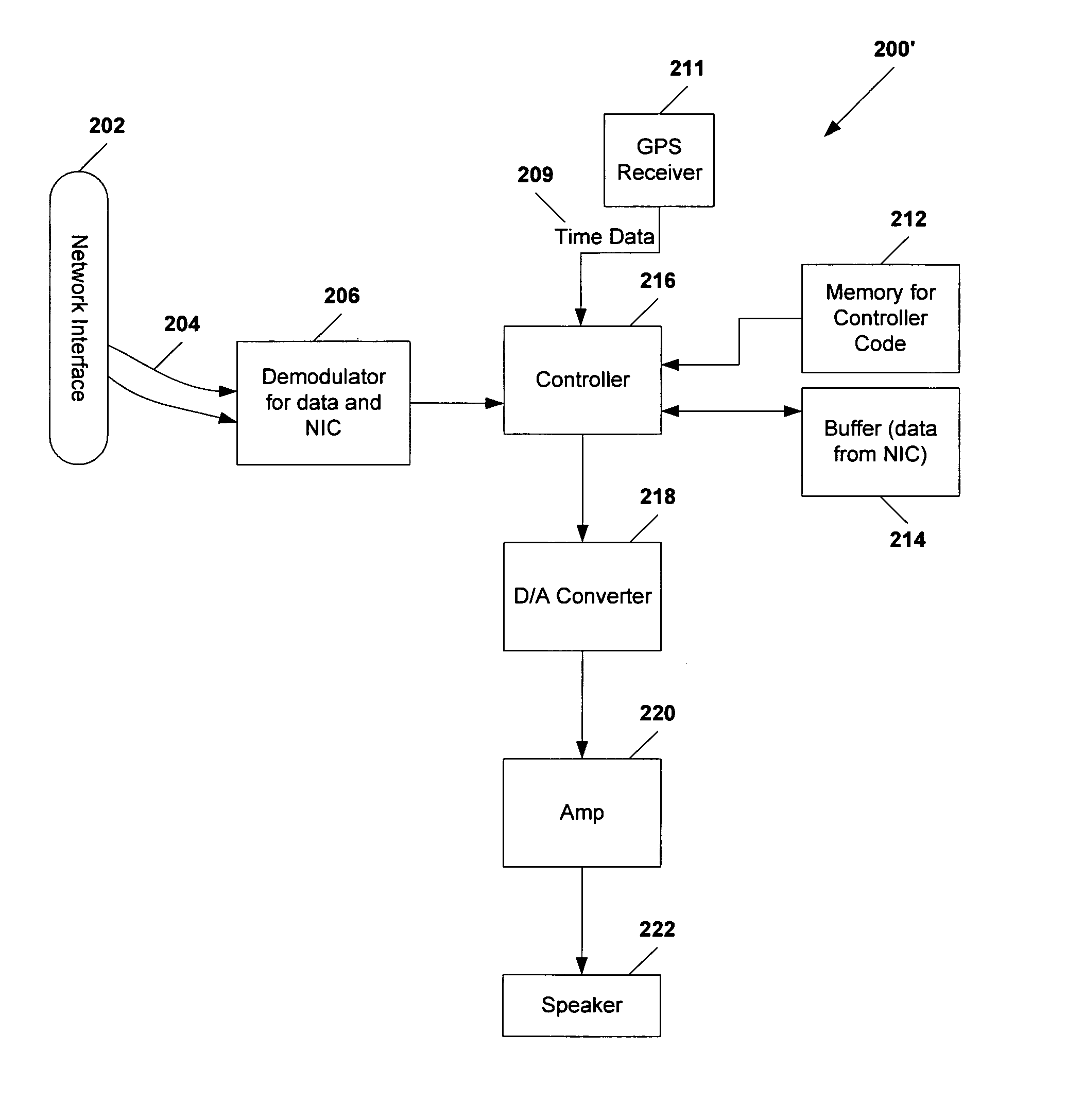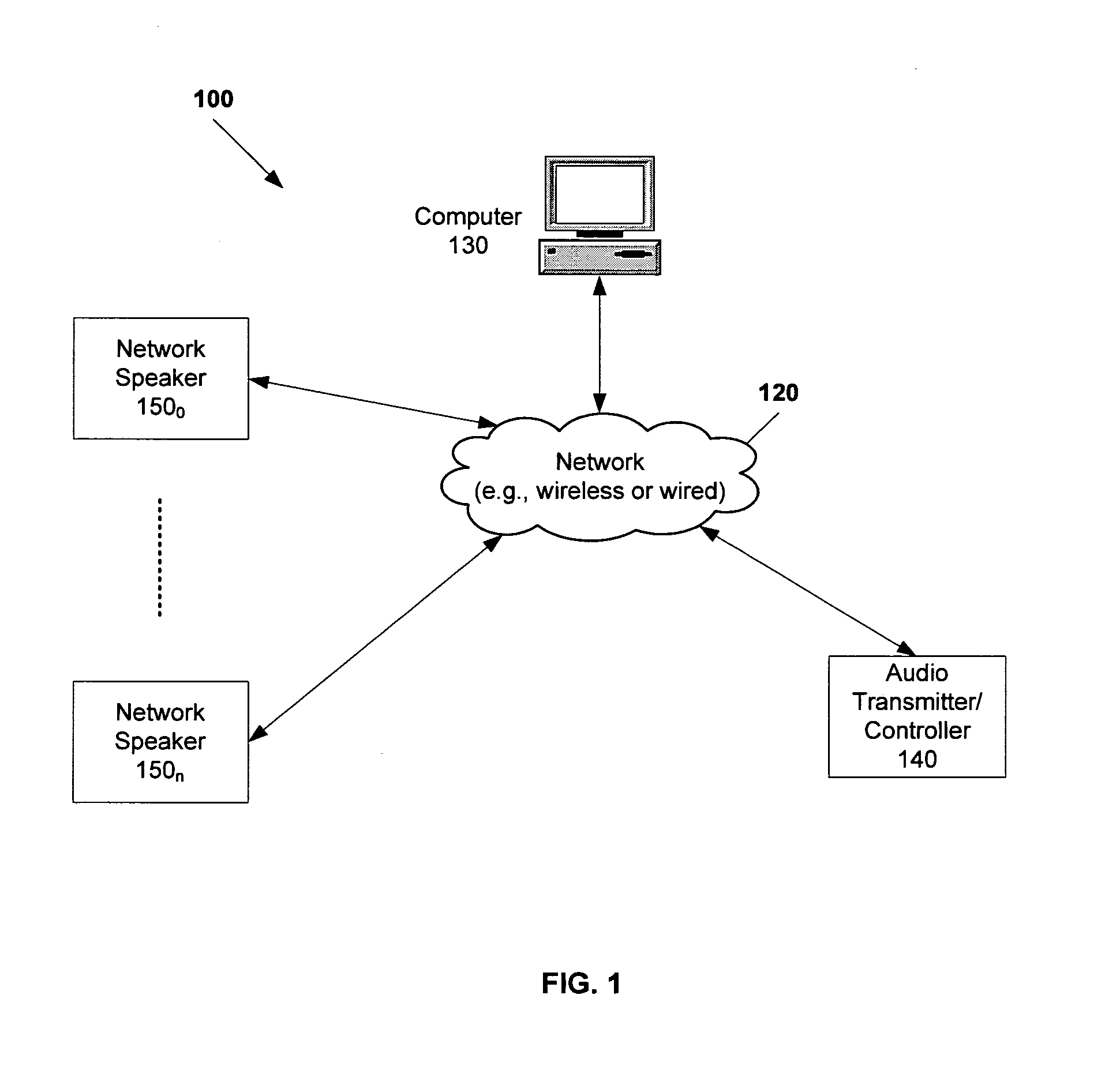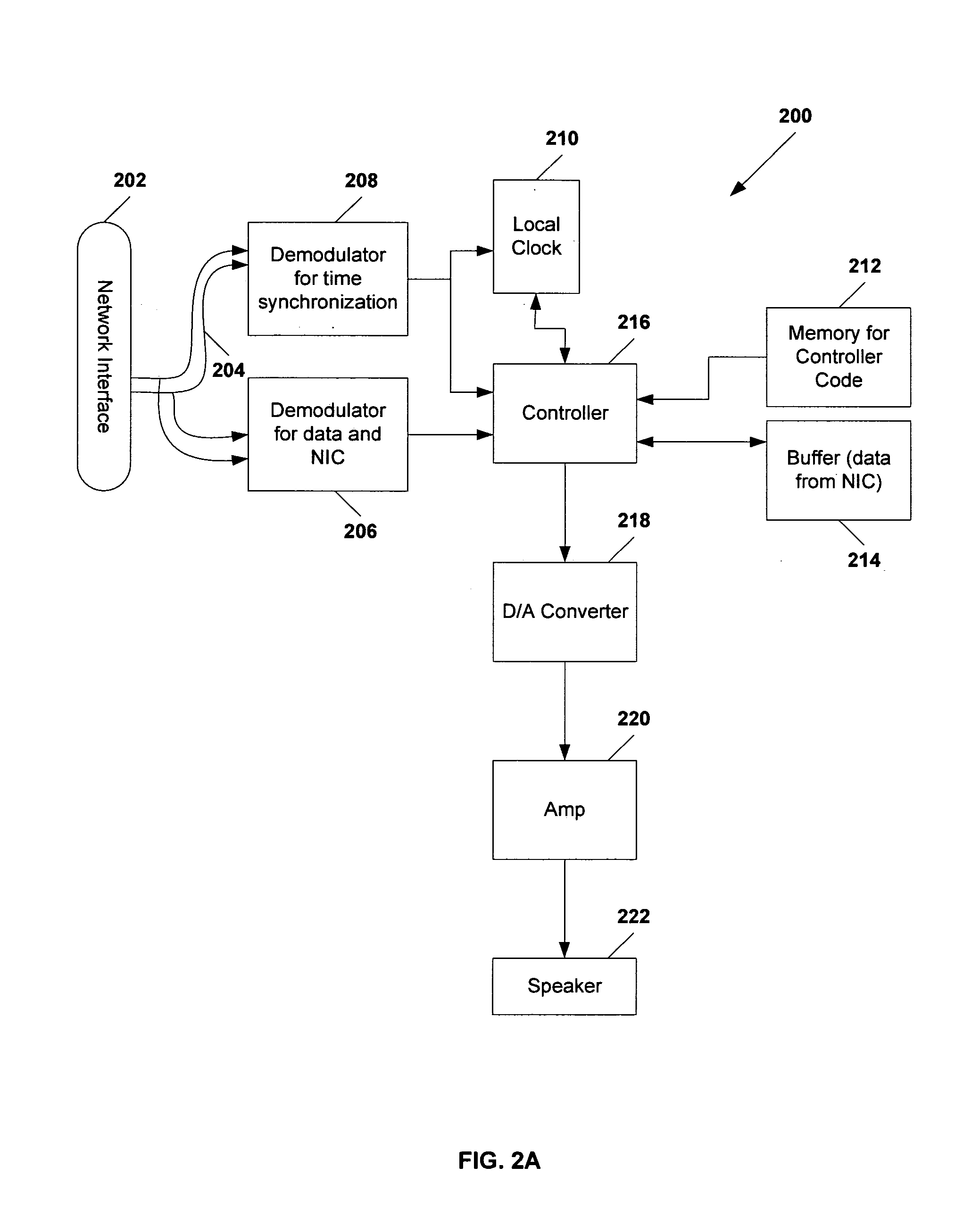Conventional networking technology has not achieved practical home networking of consumer electronic devices.
One fundamental obstacle to such networking is the difficulty of interconnecting various types of consumer
electronics devices within a
single room, or throughout an entire home or other environment, such as a hotel,
apartment building, car, boat, or recreational vehicle.
Moreover, when such devices are interconnected, there remain problems in distributing audio, video, and other types of media / data, in a sufficiently synchronized manner.
Current systems for interconnecting consumer
electronics and other devices have inadequate media synchronization, which is problematic.
Synchronization is a major problem since delays among different devices in receiving media data can be on the order of hundreds of milliseconds, thereby resulting in distorted playback of content.
A particularly important
network parameter is the reliability of on-time delivery of time-sensitive data, sometimes called “
quality of service.”
Quality of service in many prior-art networks is low, because many network protocols are collision-based (i.e., there is no
handshaking or allocation of network resources between devices to preclude the need for repeat transmissions of time-sensitive data on congested networks).
This is not true for networked speakers, due to a variable latency in the transmission of the audio data from the audio controller (the network stereo equivalent to a pre-
amplifier / controller) to the speakers.
Yet, both methods are problematic for the reasons discussed below.
However, this method has several problems.
If a speaker loses the
network connection (e.g., is accidentally unplugged for an instant), the speaker will lose synchronization.
Therefore, although network synchronization is simple to implement by using the
arrival time of the first packet, the
multicast transmission method is not practical for high quality playback.
Unfortunately, such synchronization is not accurate enough for audio samples based on 24-bit samples taken with 96 kHz sampling rates.
For example, home theater systems effectively are limited to a
single room in a house, primarily due to the difficulty and expense of interconnecting devices.
Current conventional attempts to address the multi-room problem (i.e., “home
multimedia networks”) exhibit a number of fundamental design flaws.
Custom installation of dedicated audio, telephone, video, and speaker cables throughout a home is required, often is prohibitively expensive, and results in relatively
poor quality due to the degradation of analog signals propagating through multiple devices and extremely long cable runs.
Transmitting multiple audio / video channels over coaxial cables, power lines, or via
radio frequency (RF) transmissions, degrades the signals significantly and results in relatively low-quality audio and
video output.
Although some systems utilize existing unshielded
twisted pair (UTP) telephone wiring to carry analog audio and video signals, the analog modulation of source audio and video signals over UTP cables also produces relatively low-quality audio and
video output.
Moreover, such systems still require custom installation of such UTP cabling.
As a result, the expense and complexity of such systems increases exponentially compared with single-room home theater systems.
Although the recent popularity of the
home computer market has led to a great deal of discussion of home networks, which merge general-purpose computing functionality with the consumer electronics devices found in home theaters, the solutions offered thus far have not advanced beyond the proposal stage.
Although it appears advantageous to connect consumer electronics devices as generic nodes on a network, existing network protocols are not optimized for real-time streams of
digital audio and video.
There are a number of obstacles to this
scenario, however, not the least of which is the absence of an existing physical and logical infrastructure to carry the digital media streams.
The
Ethernet, for example, is not optimized to carry real-time continuous digital media streams.
It is an asynchronous, packet-based protocol that would add significant overhead to
digital audio and video samples, which require consistent and timely delivery, as opposed to the ability to send “burst” packets of information at high speeds
on demand.
However, both are unsatisfactory solutions as they provide unidirectional data flow, and are unable to
handle control signal transmissions.
Synchronous network protocols (as discussed below) have not been optimized or adapted for popular use with consumer electronics devices to enable the practical distribution of digital media.
While some TDMA systems can allocate multiple time slots for higher bandwidth devices, TDMA is generally an insufficient alternative because in the context of transmitting digital media streams, certain data streams require more bandwidth than others.
This problem is exacerbated when asynchronously distributed variable bit-rate data, such as MPEG2 compressed video, needs to be accommodated.
TDMA network technology provides no solution to either of these problems.
Moreover, that time slice might change whenever a
new device is added to or removed from the network.
Thus, a device cannot guarantee consistent delivery of particular data, despite the synchronous nature of TDMA.
Therefore, information will not always propagate through a device at a consistent rate, due to the difference between the transmit oscillator and receive oscillator within a device, among other factors.
FDDI devices compensate for this difference with an “elasticity buffer” which avoids losing data, but this does not guarantee consistent delivery of data.
For example, if a device receives data “late,” it will transmit that data late.
Thus, FDDI devices also cannot guarantee consistent delivery of data such as real-time continuous digital media streams.
They are optimized for high
throughput, but not for consistent, synchronous delivery of data.
Since breaking the loop interrupts the network, this technique of using FDDI falls short of providing a
synchronous network.
Furthermore, both TDMA and FDDI systems do not transmit bi-directional data over a
single pair of wires.
Although many
peripheral devices, as well as stereos and televisions, have adopted this standard for communication over bi-directional high speed networks including access to CE equipment (devices), these IEEE 1394 implementations nevertheless fail to include the transmission of
time synchronization signals.
This is problematic as synchronization issues are left to the individual devices.
 Login to View More
Login to View More  Login to View More
Login to View More 


